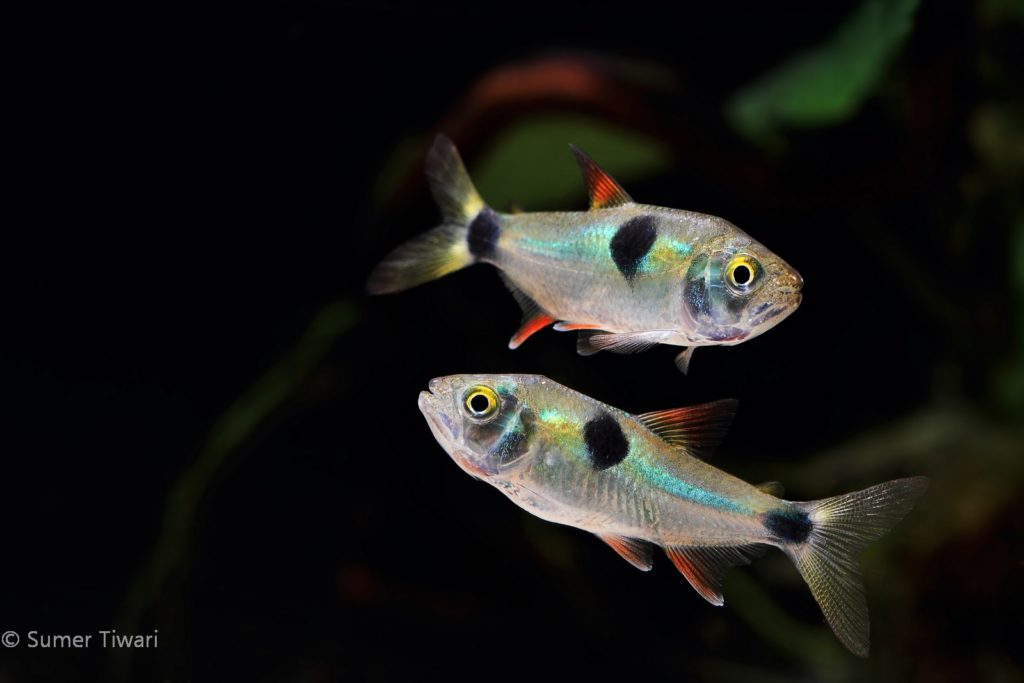
Symmetry- animals such as humans, fish, etc., are symmetrical. To be specific, fishes and humans possess bilateral symmetry. If you imagine a vertical plane going through the fish, you will notice that fish also have two symmetrical halves, just like humans. This also means that their jaw structure is symmetric as well.
But just like humans develop handedness (left-handed or right-handed), a few scale-eating fish species have also developed handedness. One such species is Exodon paradoxus.
Lepidophagus Fishes
Exodon paradoxus, or commonly called the Bucktooth Tetra, is a species found throughout the Amazon basin. Although it is considered a tetra, most of its behavior and habits are unlike the usual expected from a tetra. This fish is an opportunistic feeder. In nature, it mostly feeds on insects, larvae, and other fishes’ scales. Yes, scales of other fish. There’s even a term for this feeding behavior – lepidophagy. It is a fascinating behavior. This way, the prey, whose scales are being eaten, doesn’t suffer life-threatening injuries. The victim just loses some scales that grow back quickly. In a way, it is a virtually renewable source of food.
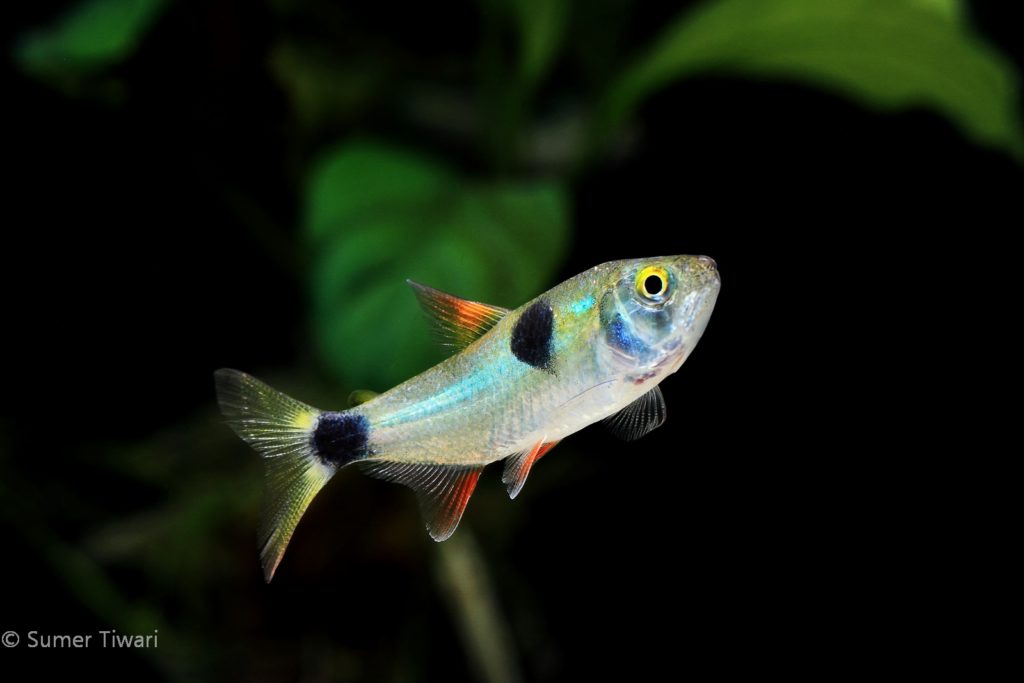
The main question that came to my mind when I learned about this behavior was related to the nutritional value of the scales. Do the scales provide enough nutrition for a fish to survive? The answer is yes. Fish scales are about 80% collagen which is a kind of protein. In addition, the mucus layer on the scale also adds to their total nutritional value.
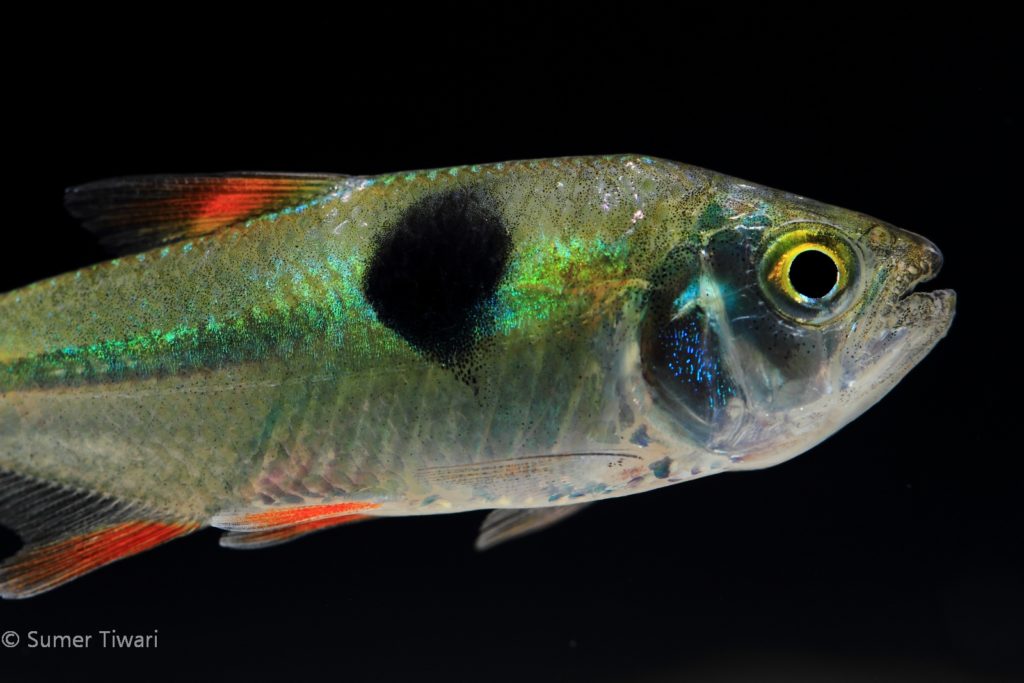
Handedness
When these fish attack the prey to grab the scales, they do it very efficiently. They make sure that they attack from a position where the prey cannot see them. This position usually is towards the tail end of the prey. But there are two sides of the prey…which side to attack? Well, individual specimens possess a specific handedness. Some specimen like to attack the right side, where some like to attack the left side. And based on their preference, these fish end up using one side of their jaw more than the other.
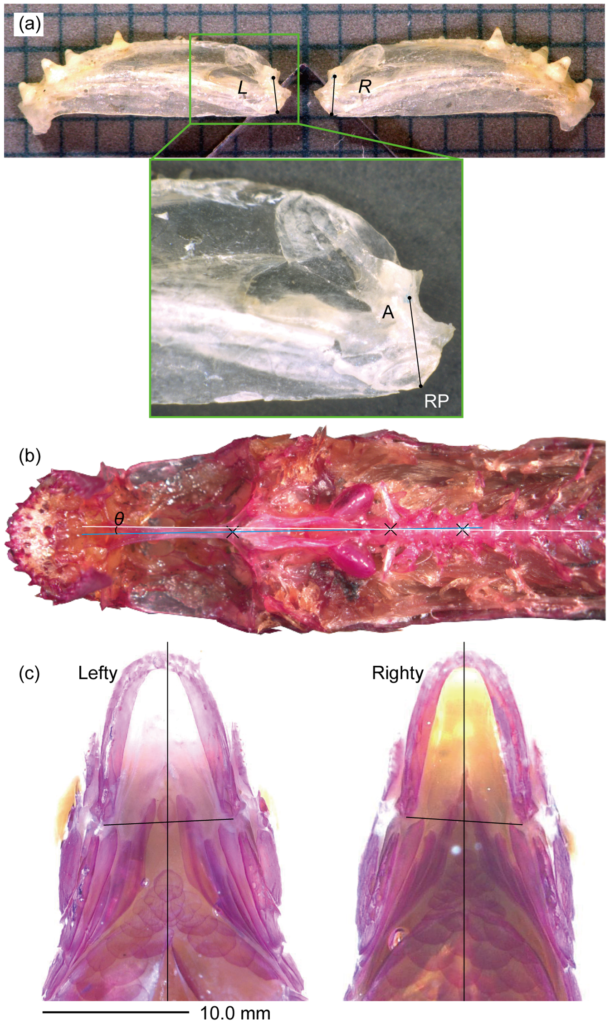
Erosion shown in their teeth is the clear evidence suggesting that. This allows them to keep the element of surprise in their attacks. The prey feels almost like a soccer goalkeeper who’s waiting for a penalty kick to come in. The goalkeeper can only expect but doesn’t know from which side the ball is going to come.
Behavior
Other than possessing this cool feeding behavior, this fish is also very bold and beautiful. If you are looking for tank mates for piranha, this fish might be one of the very few fish species that might fit the bill. However, it is advised that you don’t put them in a community tank due to their behavior. They will waste no time terrorizing the rest of the fishes in your community tank; unless your community tank is full of piranhas.
Reportedly, the communities that live on the banks of the Amazon River drop their used dishes and utensils in the river, and Exodon paradoxus does a fairly good job of cleaning them. I am not sure if that’s true or not, but I know that this fish is a wonderful one. Every serious hobbyist should keep this fish in a species-only tank at least once to understand its behavior. You won’t regret it.
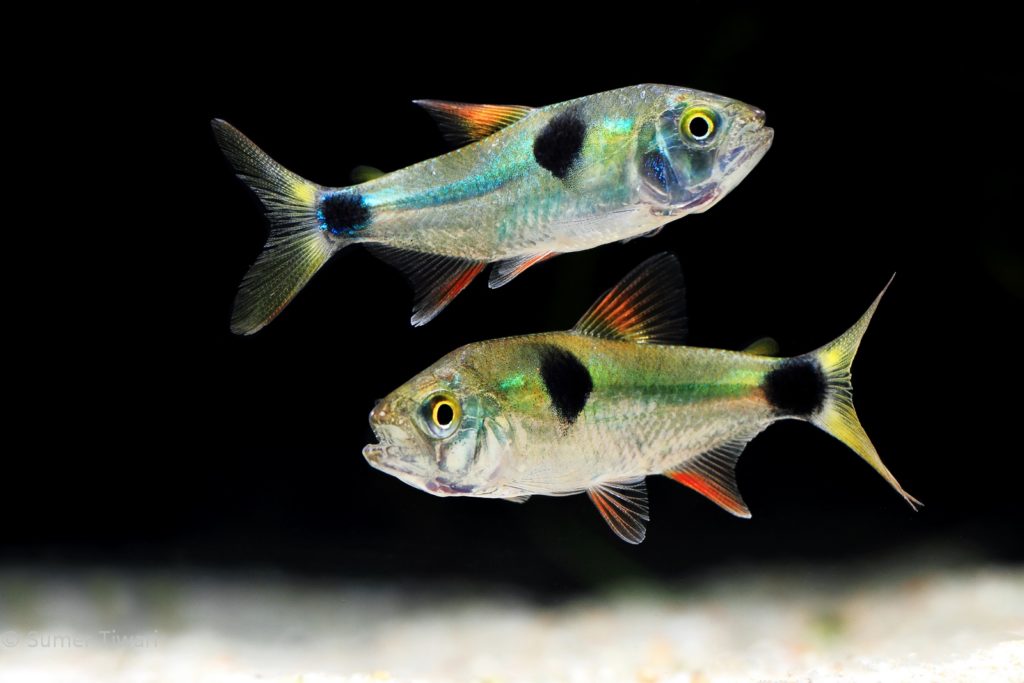
At A Glance: Exodon paradoxus
Common Name: Bucktooth Tetra
Geographic Origin: South America, including Guayana and the Amazon and Tocantins river basins
Size Range: 3 inches (7.5 cm) per Fishbase, but up to 6″ (15 cm) in the aquarium per SeriouslyFish.com
Native Temperature Range: 73-72 F (23-28 C)
Native Water Chemistry: pH of 5.5 – 7.5, generally soft water
Aquarium Type: Species-only displays are recommended, although benthic fishes such as various armored catfish are likely to be ignored.
Behavioral Notes: Aggressive, even amongst themselves, so purchase in large groups all at once.
Minimum Recommended Standard Aquarium Size: 75 gallons (284 L) for a shoal of 12 or more individuals.
Aquarium Diet: Carnivorous, Insectivorous type foods are recommended. Frozen foods are eagerly eaten; most will also come to accept prepared dry diets.
Breeding Notes: egg scatterers, limited information is available.
References
Palmer AR. Scale-eating cichlids: from hand(ed) to mouth. J Biol. 2010;9(2):11. doi:10.1186/jbiol218 https://www.ncbi.nlm.nih.gov/pmc/articles/PMC2871516/
Lutvi Abdullah. HIVI (Hardtack Innovation Fish Scale) cookies made from fish scales to optimally increase nutrition by | Journal of Nutritional Health & Food Engineering Volume 9 Issue 3 – 2019 https://medcraveonline.com/JNHFE/JNHFE-09-00331.pdf
Seriouslyfish Species Profile: Exodon paradoxus https://www.seriouslyfish.com/species/exodon-paradoxus/
Fishbase Species Profile: https://www.fishbase.se/summary/Exodon-paradoxus.html
Jaw laterality and related handedness in the hunting behavior of scale-eating characin, exodon paradoxusHata H., Yasugi M., Hori M.(2011) PLoS ONE, 6 (12), art. no. e29349 https://journals.plos.org/plosone/article?id=10.1371/journal.pone.0029349





